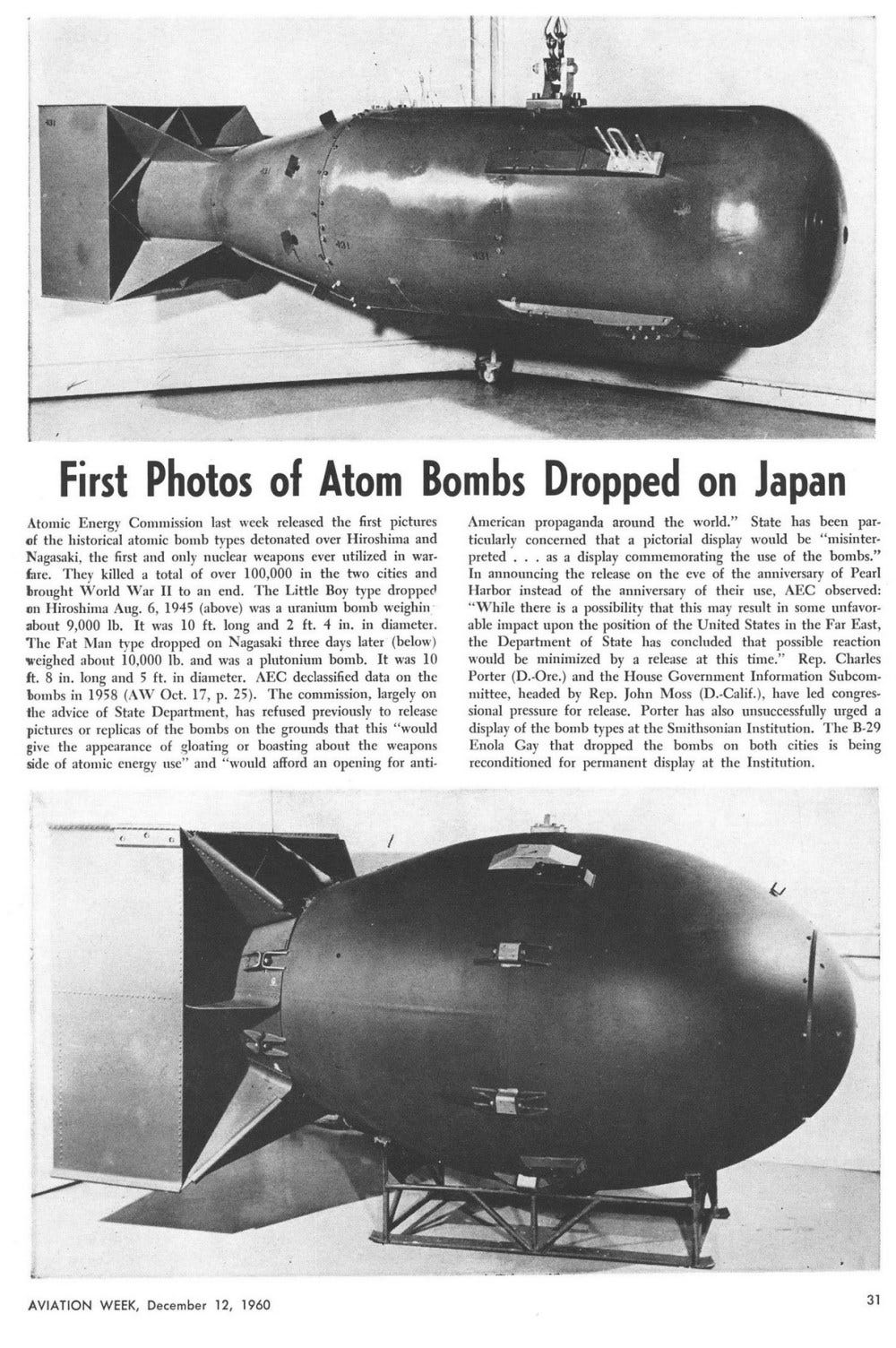Morality & Weaponry
OPINION: Does it make any difference in warfare if you kill with an artillery shell, a sniper's bullet, a drone, lethal gas, a tactical nuke or cluster bombs? A weapon is a weapon. And dead is dead.
Every weapon that has ever been devised has either been used in warfare, or likely will be used one day against an enemy. Even so-called weapons of mass destruction. Thousands of combatants have been slaughtered with chemical agents and toxic gases. Atomic bombs, dropped by the United States of America on Japan, killed between 90,000 and 146,000 people in Hiroshima and between 60,000 and 80,000 people in Nagasaki; roughly half from the bomb blasts and the rest from radiation over the course of painful weeks and months.
J. Robert Oppenheimer, the American theoretical physicist who was director of the Los Alamos Laboratory and was known as the “father of the atomic bomb,” was asked if he had any moral scruples about his responsibility for the research and design of the Manhattan Project’s devastating bombs “Little Boy” and “Fat Man.” His answer: “Terrible ones.”
And yet, weapons of mass destruction have continued to be dreamed, designed, developed and deployed. So much for moral scruples.
Right now, both Russia and Ukraine are using cluster bombs on each other. More than 100 nations have signed a treaty outlawing the use of cluster munitions. These are bombs that explode over enemy territory, sending out hundreds of smaller bombs that are meant to detonate upon impact with the ground. The United States, Russia & Ukraine are not signatories to that treaty.
In fact, Ukraine’s president Volodymyr Zelensky has been begging U.S. president Joe Biden to give his armed forces thousands of cluster bombs now in America’s arms stockpile. Ukraine’s military commanders hope to use the cluster munitions in their counter-offensive to rain death down on entrenched Russian positions otherwise difficult to reach and pummel with artillery. Reportedly, Biden has agreed to supply the bombs. There are plenty to be had.
Reports The Washington Post:
“Although the United States has used cluster munitions in every major war since Korea, no new ones are believed to have been produced for years. But as many as 4.7 million cluster shells, rockets, missiles and bombs, containing more than 500 million submunitions, or bomblets, remain in military inventories, according to estimates by Human Rights Watch drawn from Defense Department reports.”
That’s 500 million ‘bomblets’ available to maim and kill around the world. Cluster bombs have been used in Afghanistan, Iraq, Syria, Lebanon, Yemen and now Ukraine.
The problem with cluster munitions is that they generally have a high ‘dud’ rate, and unexploded ordinance on the ground is then a danger to civilians and advancing armies, as they can explode at any time. And therein lies the moral dilemma. But, some military analysts reportedly say that “the weapons are ‘100 percent necessary’ to meet the current battlefield needs” of the Ukraine army. So, morality is not the first consideration when choosing the weaponry needed for victory in warfare.
Biden Weighs Giving Ukraine Weapons Banned by Many U.S. Allies - The New York Times
Biden approves cluster munition supply to Ukraine - The Washington Post
Many Americans consider the use of cluster munitions to be tantamount to crimes agains humanity. Even some in the Biden administration. Reports The New York Times:
When, five days into the war, Jen Psaki, then the White House press secretary, was asked about the Russian use of unconventional weapons, including cluster munitions, she said: “We have seen the reports. If that were true, it would potentially be a war crime.”
Ironically, this comes as the United States is destroying the last of its once-vast chemical weapons arsenal. In spite of an agreement by 193 signatories to the Chemical Weapons Convention, these countries are likely to still have stores of lethal chemical weapons: China, Egypt, Iran, Israel, Japan, North Korea, Pakistan, Sudan, Syria, Taiwan & Vietnam. (So says Wikipedia.)
(US Honest John missile warhead, circa 1960, showing M134 bomblets filled with Sarin)
But, honestly, does any handwringing on the inhumanity of weapons of mass destruction really matter? As noted, to end our war with Imperial Japan, the United States unleashed the most destructive weapon ever made. President Truman ordered the development and dropping of what he dubbed “the most terrible bomb in the history of the world.” Morality aside, Truman did what he thought needed to be done.
And, so too, the wagers of war have used mass destruction as a tactic as early as they could. Kill all you can as quickly as you can and as easily as you can.
In World War I, the use of chemical weapons such as chlorine, phosgene, and mustard gas resulted in more than 1.3 million casualties and approximately 90,000 deaths.
The fire bombing of Dresden by over 1,200 Allied bombers of the RAF and the US Army Air Forces killed around 25,000 Germans. At the start of WWII, the bombing of civilians was seen as unjustifiable. That changed when it was needed to change.
It has ever been so that if a weapon can be used that kills more of the enemy in the most efficient manner, it will be widely used. Hand to hand. Spear to spear. Arrow to arrow. Bullet to bullet. Cannon ball to cannon ball. Canister to canister. Grenade to grenade. Shell to shell. Bomb to bomb. Missile to missile. Drone to drone. Toxin to toxin. Nuke to nuke. Morality to immorality.
Killing fields are brutal and bloody. Does it matter if a warrior is felled by a bullet or a toxin, a grenade or a nuke, a ‘bomblet’ or a ‘Fat Man?’ We make rules of war, outlawing the most heinous of weaponry. Then, when we see we are losing the battle, we lose our moral scruples as well. And the cluster bombs fly and fall and kill.






